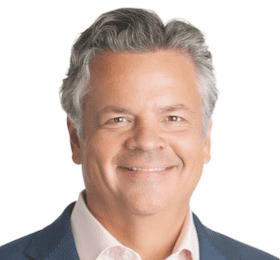By Alberto Casellas, EVP and CEO of CareCredit at Synchrony
Recent years have ushered in countless changes across the healthcare landscape. For one, we’ve seen a noteworthy shift in how patients access and pay for care. Providers have helped to usher in an inspiring new era of digitized care, with the introduction of accessible telehealth, wearable wellness devices, and more. It’s certainly true that healthcare delivery has evolved to meet the expectations of new generations – and older generations are reaping the benefits, too.
The patient financial landscape, however, hasn’t evolved in quite the same way. Insurance cost-shifting has put the onus on patients to pay more out-of-pocket healthcare costs, while the available methods to pay for care have not kept pace. In fact, recent data points to a concerning trend in how the shift in financial responsibility is impacting debt across all age groups. As of 2021, 58 percent of all third-party debt collection tradelines were for medical debt, making it the most common debt collection on credit records. Americans owed an astounding estimated $140 billion in unpaid medical bills to collection agencies in 2020, according to research published in JAMA.
One thing is certain – the healthcare finance experience must evolve to match the changing needs of patients and providers, especially in our current landscape. To understand how, let’s examine how care costs are impacting each generation, and what’s on the horizon.
Medical Debt Impacts All Generations
People have become accustomed to shopping for and accessing care in the same way they might shop online for a new outfit – by comparing costs and provider options, while also weighing the overall care experience. They also are shouldering a considerable payment burden.
In fact, a recent survey by HealthCare.com found that one in four (25%) Generation Z and 23% of Millennial respondents skipped rent or mortgage payments because of their medical debt. This compares to only 12% of Baby Boomers. Limitations of insurance coverage is a big factor, with 68% of Gen Z respondents to that same survey reporting that their plan did not cover the service they received which resulted in medical debt. Nearly half as many Baby Boomers (36%) reported the same issue.
With these statistics in mind, it’s no wonder why patients have become increasingly accustomed to researching their care options. For example, a recent survey by Cedar found 93% of consumers say that the quality of their billing experience is an important factor in whether they’ll return to a provider. Patients are now much more inclined to “shop” for a provider based on the overall patient experience they’ll receive, and both cost and payment options are a top consideration.
Older Generations May Need More Savings On-Hand
While these data paint an interesting picture of how medical debt is distributed across generations, it’s important to note older generations, too, may struggle to afford the cost of their care that fits their fixed incomes and retirement budgets.
The University of Michigan’s Institute for Healthcare Policy and Innovation recently found in a survey of 2,000 participants that nearly three in 10 adults (29%) between 50 and 80 years of age say they earmark savings specifically for future health costs. Of those who did not save for health costs, 40% said they’d have enough money to pay for these expenses without setting any money aside for it, while 27% said they couldn’t afford to save for future healthcare costs at all.
It’s clear that concerns about being able to afford care weigh heavily on everyone – and financial limitations shouldn’t be the main factor delaying an essential procedure. While payers and providers are offering financial plans and patient-friendly financial portals, flexible financing for procedures is another avenue that can be explored to reduce the payment burden on patients.
Planning Ahead with Flexible Patient Financing
Patients are becoming increasingly educated about their payment options, and this shift is important for providers to consider as they revitalize their payment portals and consider payment solutions. On the provider side, with recovery from the pandemic and staffing resource challenges top of mind, time to payment is also a key concern. We know that the higher the bill, or the more time that passes following treatment, the less likely the full payment will be received. Approximately 70% of providers surveyed say it can take more than 30 days to collect payment after care is administered – and for many providers juggling finances and revenue cycle management counts every day.
A third-party financing solution is an important tool for providers seeking to accelerate the payment process, while also enabling a seamless experience for savvy patients. That said, it’s important to consider providing a financing solution that instills a sense of assurance for patients who are concerned about bridging the gap between insurance and payment. A healthcare-specific credit card would allow patients to pay for deductibles, treatments or procedures not covered by insurance, and out-of-pocket medical expenses over time, in order to budget accordingly and make payments easier to manage. This helps alleviate billing pressure on the provider side, and helps assure peace of mind for patients.
With evolving healthcare costs as well as the increased payment responsibility on consumers, it is important for all generations to get ahead of financial planning as much as possible by seeking out providers who offer flexible financing options. As we settle into our “new normal” and seek to build a better healthcare system, it’s the next frontier of innovation for everyone.
The Editorial Team at Healthcare Business Today is made up of skilled healthcare writers and experts, led by our managing editor, Daniel Casciato, who has over 25 years of experience in healthcare writing. Since 1998, we have produced compelling and informative content for numerous publications, establishing ourselves as a trusted resource for health and wellness information. We offer readers access to fresh health, medicine, science, and technology developments and the latest in patient news, emphasizing how these developments affect our lives.









